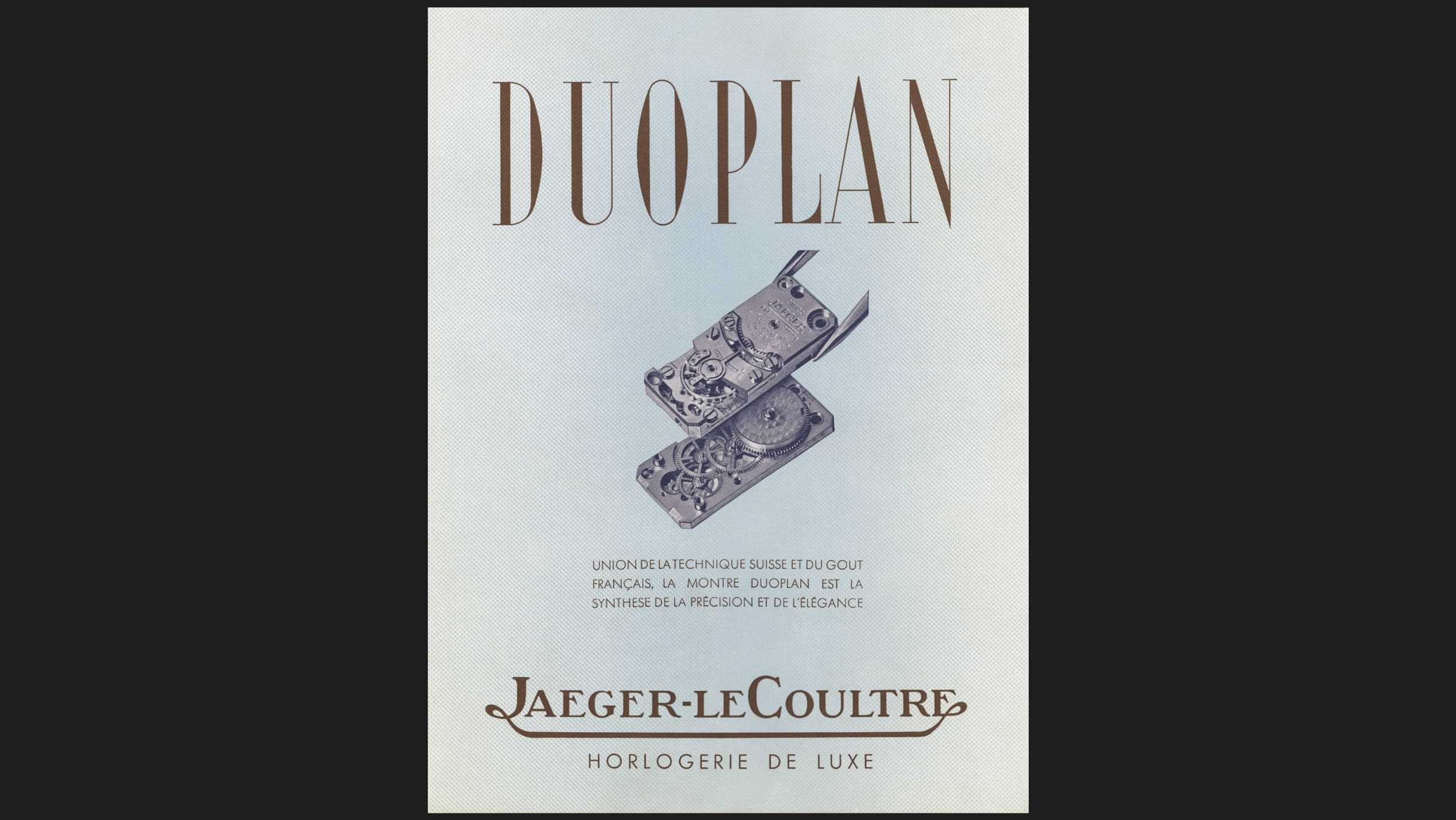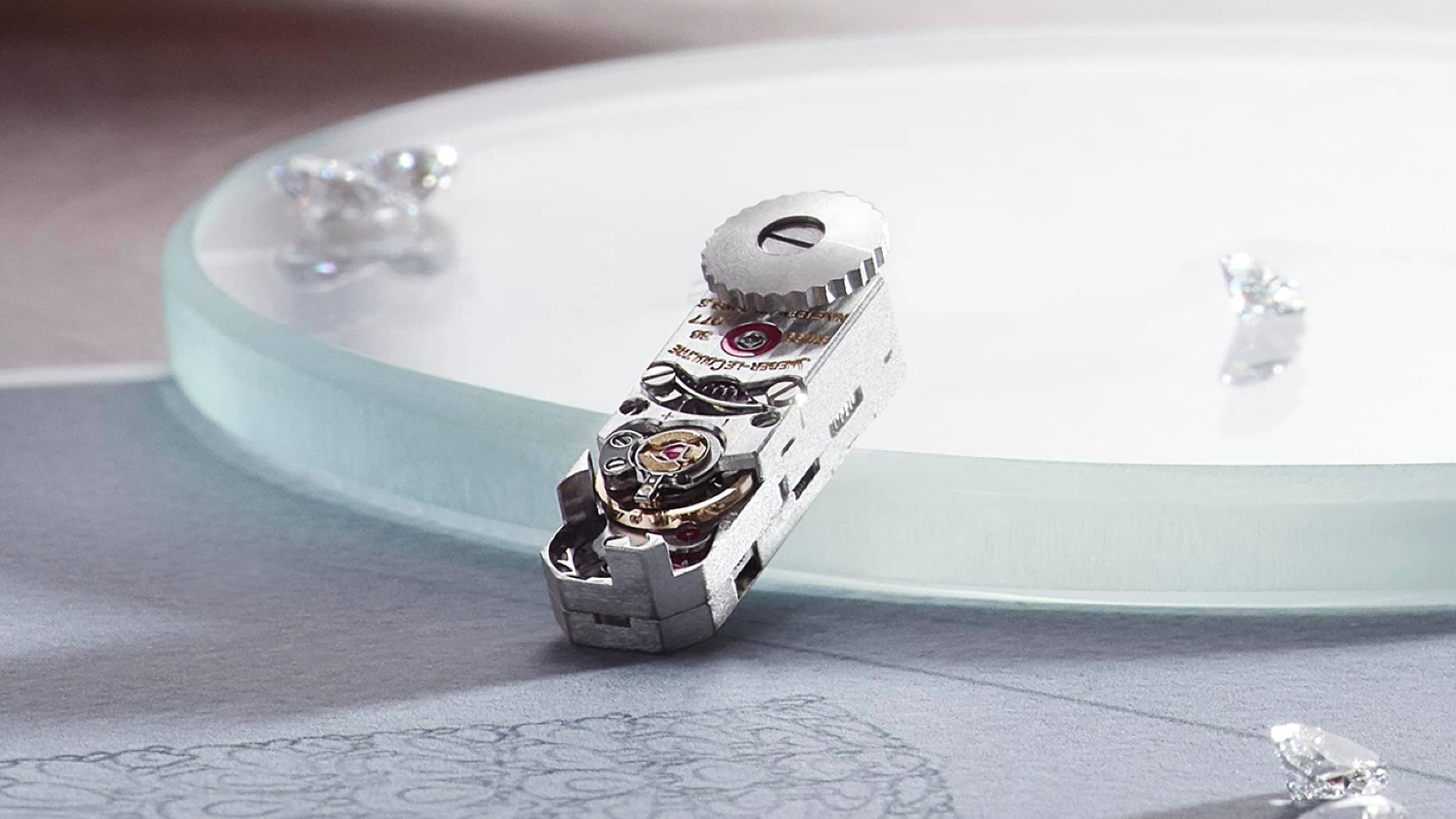In June of 1953, Westminster Abbey witnessed a landmark moment, the crowning of Queen Elizabeth II. All of 25 and with the world’s eyes on her, the queen wore a white silk dress embroidered with floral emblems of the Commonwealth countries of the time, and completed the look with diamond-studded earrings and necklace, and a pink-gold, diamond-studded slender bracelet watch. This was the Jaeger-LeCoultre Calibre 101 Reine, which featured 110 pavé set diamonds, totalling 11-karat, in two adjacent rows with a silvered opaline dial at the centre. The watch measured 18.35 mm x 6.80 mm x 5.47 mm, and was gifted by the former president of France, Vincent Auriol, when the queen was still a princess.
It was a fitting watch: While the ceremony broke records for being the first of its kind to be aired globally and watched by millions, the Calibre 101 carried the title of being the smallest mechanical movement ever created. And it still holds that title today. In 2012, on the 60th anniversary of the queen’s coronation, Jaeger-LeCoultre presented to her another Calibre 101, a white-gold piece, as a tribute to the one she wore on that day. “Over the decades, the Calibre 101 has been a symbol of elegance and sophistication, particularly in women’s watchmaking,”says Matthieu Le Voyer, Chief Marketing Officer of Jaeger-LeCoultre.
Undoubtedly, Jaeger-LeCoultre’s Calibre 101 is iconic, a mechanical marvel most sought-after for bejewelled ladies’ watches. It is not just a milestone development for the brand, but also a turning point in watchmaking history. The Calibre 101 was presented in 1929 and measured 14mm in length, 4.8mm in width, and 3.4mm in height. Over the years, the tiny calibre has gone through some upgrades, the original 78 components increased to 98 for improved precision and reliability. The movement, however, measures and looks the same. It is rectangular or baguette-shaped, and less than 1 gram in weight. It beats at 21,600vph and offers a 33-hour power reserve. Most notably, the world’s tiniest movement is still in production.
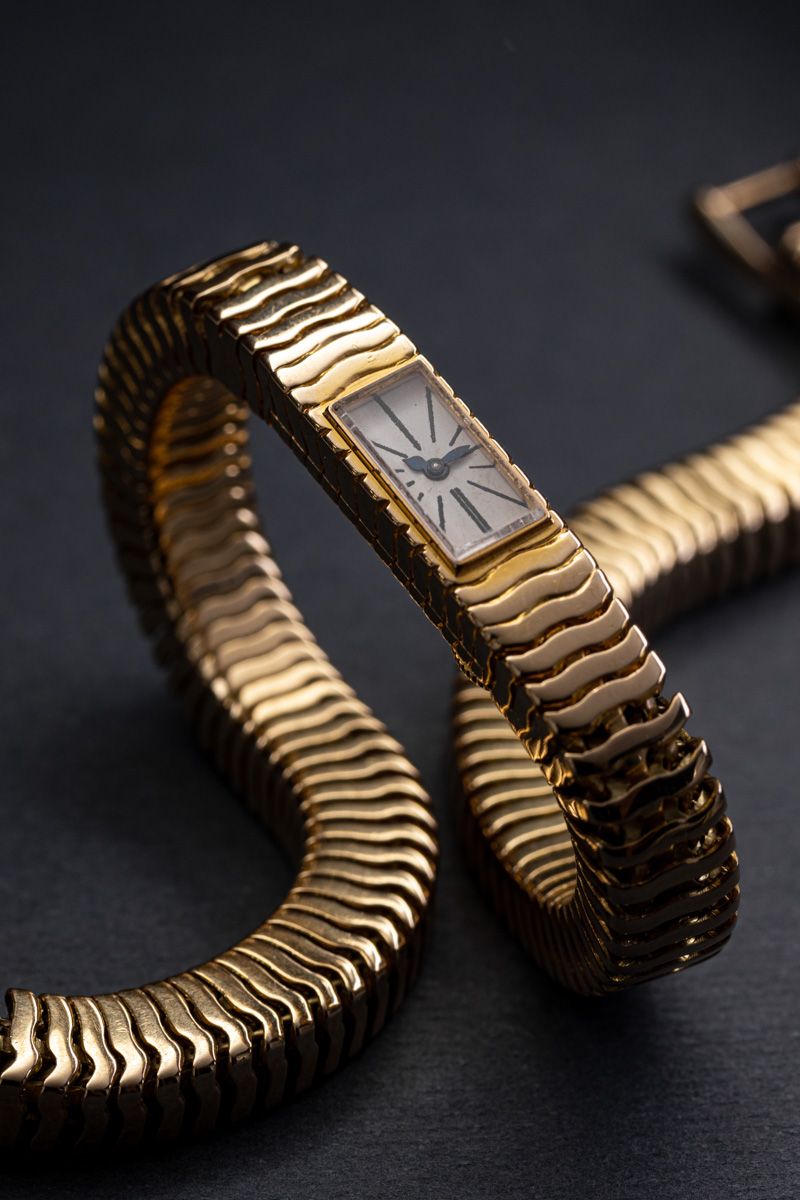 A vintage Cartier with Jaeger-LeCoultre Calibre 101 movement
A vintage Cartier with Jaeger-LeCoultre Calibre 101 movementIn the race to create thinner and smaller timepieces and calibres, watchmakers have pushed their limits to record-breaking points. One such initiative resulted in the tiny Piccolissimo BVL100 by Bvlgari, who created it for its secret and gem-studded ladies’ watches. It measures 12.3mm in diameter, with a height of 2.5mm. On comparing the area of the two, the Calibre 101 is 67.2 sq mm and the Piccolissimo is 118.87 sq mm.
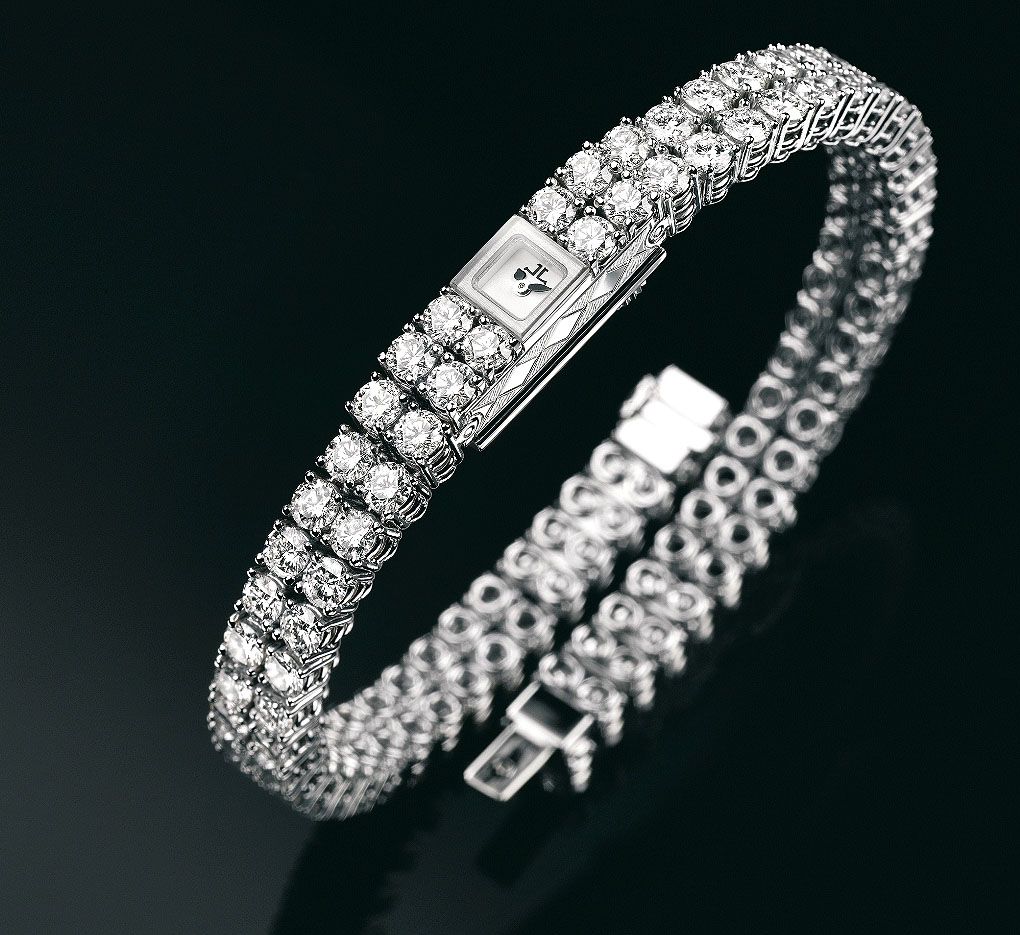 Calibre 101 Reine in white gold
Calibre 101 Reine in white gold The reason that the maison decided to create the world’s smallest calibre arose from wanting to address the needs of all watch enthusiasts, and recognising that women required a smaller movement that could be discreetly hidden while checking time. For the artisans at Jaeger-LeCoultre, this was a unique opportunity to explore their creativity and technical mastery. “The exceptionally small size of the Calibre 101, and its unique shape, gave our master craftsmen greater creative freedom than ever before, allowing them to create timepieces that blend high jewellery with precision timekeeping in all shapes,” says Voyer.
From the Beginning
Back in the 19th century, Antoine LeCoultre, the founder of Jaeger-LeCoultre, invented the Millionometre, the first ever tool that allowed watchmakers to measure watch components up to one micron. This invention turned out to be a significant one for the brand. After Jacques-David LeCoultre, the grandson of Antoine LeCoultre, merged the family business with French watchmaker Edmond Jaeger and Jaeger-LeCoultre was born, one of the first projects they worked together on was the revolutionary Duoplan technology in the year 1924.
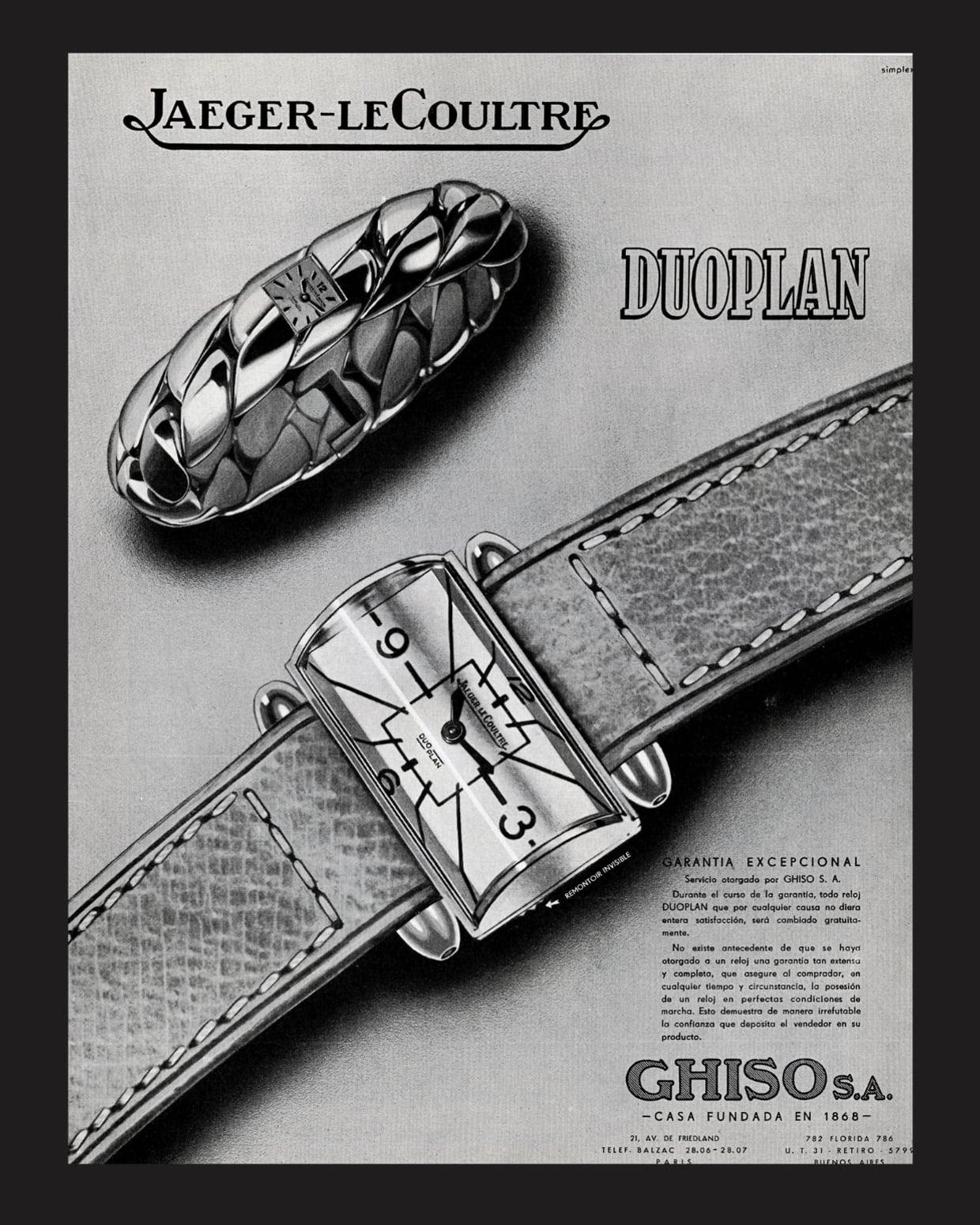 Ad featuring the Calibre 101
Ad featuring the Calibre 101The necessity to create the Duoplan came from the demand for smaller and precise movements of robust build, suitable for women’s jewellery watches. So, the founders of Jaeger-LeCoultre broke the conventional design of watch calibres, and designed a new movement stacked in two levels, where the movement components were arranged on two planes (thus the name ‘Duoplan’). In traditional movements, the balance wheel is typically placed in line with other components, but the Duoplan design placed the balance wheel on the upper plane and the gear train on the lower or the dial’s side. The arrangement allowed for a larger balance wheel and barrel in a compact case, and helped maintain the accuracy and power reserve of the watch despite its small size. The crown was also moved to the back of the case, which contributed to the sleek aesthetic of the watches, also giving it the nickname ‘Backwinder’.
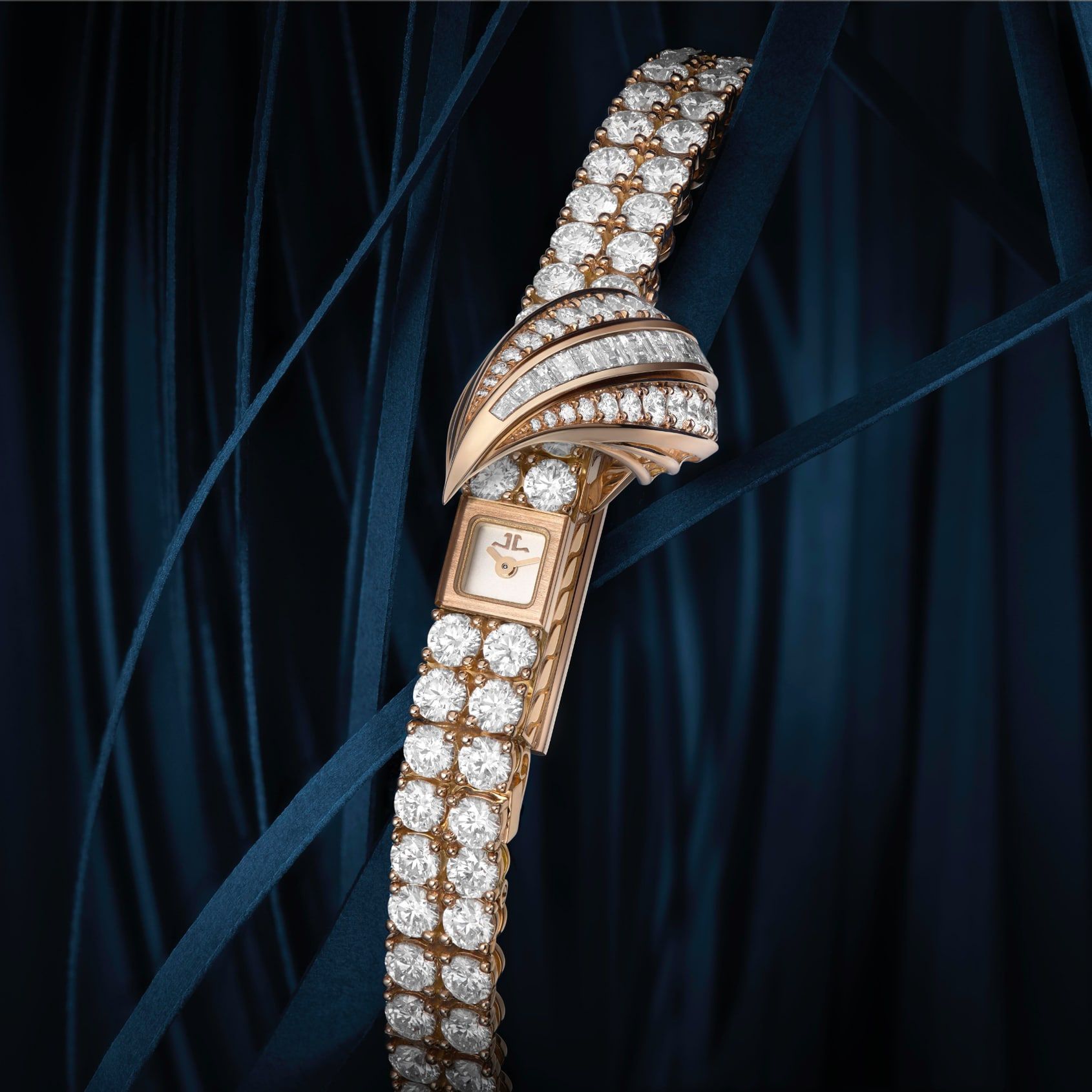 Calibre 101 Feuille opens to reveal the dial
Calibre 101 Feuille opens to reveal the dial Creating a movement such as Calibre 101 certainly involved challenges and required extraordinary micro-mechanical engineering to be able to miniaturise components while ensuring their reliability and precision. “Every piece, no matter how minute, had to be designed and crafted with meticulous care. Balancing the movement’s size with its functionality was a monumental task that demanded a new level of ingenuity and expertise from our watchmakers,” says Voyer. “The primary limitation of the Calibre 101 lies in its complexity and the level of expertise required for its assembly, setting, and maintenance. Its minuscule size demands the highest level of dexterity, which is both a challenge and a hallmark of its exclusivity,” he adds.
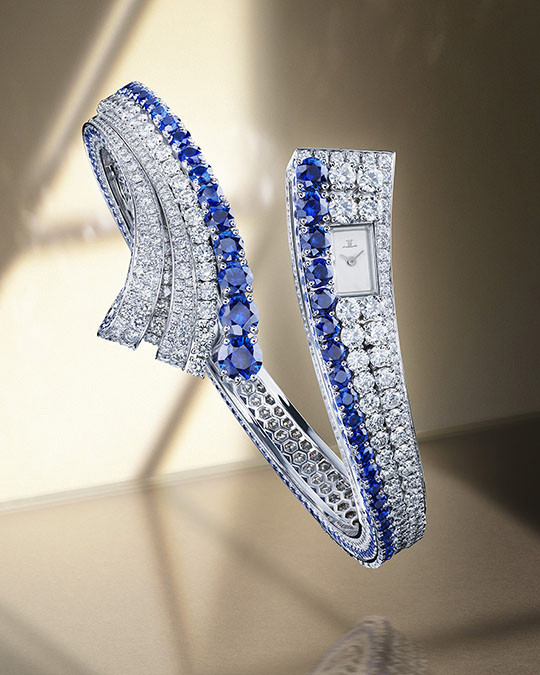
Notably, Calibre 101, a manual-wound movement, was not the only Duoplan movement. Other movements in the Duoplan series included the Caliber 104, which was slightly larger but retained the split-level architecture; the Caliber 403, which was designed with a different crown position at the top right corner; and Calibre 409, which was the largest Duoplan movement. Each of these calibres allowed for various watch designs, while maintaining the core principle of compact and precise watch movements.
In the 1920s, Edmond Jaeger joined hands with Cartier for a venture, which was known as European Watch & Clock Company at that time. Together they created EWC calibres that Cartier used for its high-end timepieces, and that’s why many vintage Cartier watches have Calibre
101 inside.
The Significant Timepieces
Although produced in small numbers, the Calibre 101 has been driving many timepieces that have adorned the wrists of women since 1929. A watch with Calibre 101 was akin to an empowering accessory, allowing women to wear something that was more than just a piece of jewellery.
The artisans at Jaeger-LeCoultre adorned every millimetre of their watches with the Calibre 101 with utmost craftsmanship, which included gem-setting, polishing, and engraving, among others. The gems sparkling on these timepieces are set in griffe setting, a signature gem-setting technique of the brand, which allows the light to pass through the stone from every angle and surface, making it shine brighter, while hiding the metal surfaces and also giving it a floating appeal. Furthermore, the case housing the movement is hand-engraved on the sides by master engravers at the Métiers Rares Atelier, who decorate it with every bit of intricacy and precision.
Significant timepieces by Jaeger-LeCoultre that housed this tiny movement included the Calibre 101 Feuille, created in the year 1959, with a secret dial covered by a leaf motif, which is raised to reveal the silvered opaline dial with baton hour and minute hands. The Feuille is also made in two variations of white (Ref. Q2863303) and pink gold (Ref. Q2862201). Both models are entirely studded with gemstones—the white-gold piece has 171 round-cut diamonds laid out in griffe and grain settings, and the pink-gold is adorned with 167 diamonds in griffe, grain, and baguette settings. However, the total carat weight of the diamonds is 10.13K in both cases.
Another sparkling piece that turned heads after its launch in 2020 was the Calibre 101 Snowdrop (Ref. Q2882201), a pink-gold watch set with pear-shaped diamonds creating a floral design, with brilliant-cut diamonds at the edges. The design here is reminiscent of white bell-shaped flowers that grow in the snow. A total of 912 diamonds (20.9K), each griffe-set by hand, bring this watch alive. Amid the flower motif lies the silvered opaline dial.
The Calibre 101 Bangle was unveiled along with the Snowdrop and takes inspiration from the Art Deco era of the 1930s, with its smooth symmetrical lines and curves, all sparkling with diamonds of varying sizes over its pink-gold bracelet. There are a total of 996 brilliant-cut diamonds of 19.7K in griffe and grain setting, and a silvered opaline dial.
Calibre 101 Today
In 2023, Jaeger-LeCoultre presented three new timepieces, two of which were new versions of the Calibre 101 Bangle with a touch of colour, and one was a fresh design in the collection. One of the two Calibre 101 Bangle timepieces featured a red lacquer dial complemented by diamonds studded over a pink-gold bracelet. For the other model, the watchmaker used a white-gold case adorned with diamonds and a streak of 347 brilliant-cut blue sapphires in a graduated demeanour, weighing 10.29K. Amid the gemstones sat a snow-white lacquer dial.
Launched with the coloured Bangle models, the newest in the collection is the Calibre 101 Secrets. The name of the watch has been thoughtfully assigned, given that the dial is hidden and can only be revealed when the wearer wishes. There is a hidden button to open the hinged covers amid the two rows of diamonds—pushing it unveils the mother-of-pearl dial—powered by micro-mechanics. As the button is released, the dial again disappears between the streak of diamonds. The timepiece is covered with 1,024 brilliant cut diamonds of 26.75K in total. The gems are put into place with claw and grain setting, where the former allowed the diamond to stay over the surface of the gold and the latter enabled light to pass through them for a sparkling appearance.
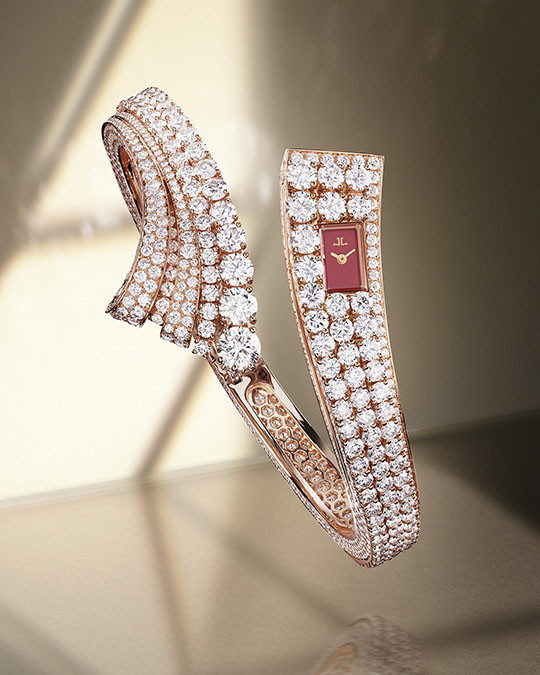
According to Voyer, other iconic timepieces that house the Calibre 101 include the Joaillerie 101 Manchette and the Reverso 101. “The Joaillerie 101 Manchette, with its intricate bracelet and sparkling diamonds, showcases the movement’s adaptability and luxury, while the Reverso 101 highlights its timeless design and versatility,”he says. “The Calibre 101 has played a pivotal role in defining the maison’s legacy of innovation and excellence, and continues to inspire our future creations. Its enduring appeal and technical brilliance make it a cornerstone of our horological heritage and a beacon for the maison’s future endeavours.”
